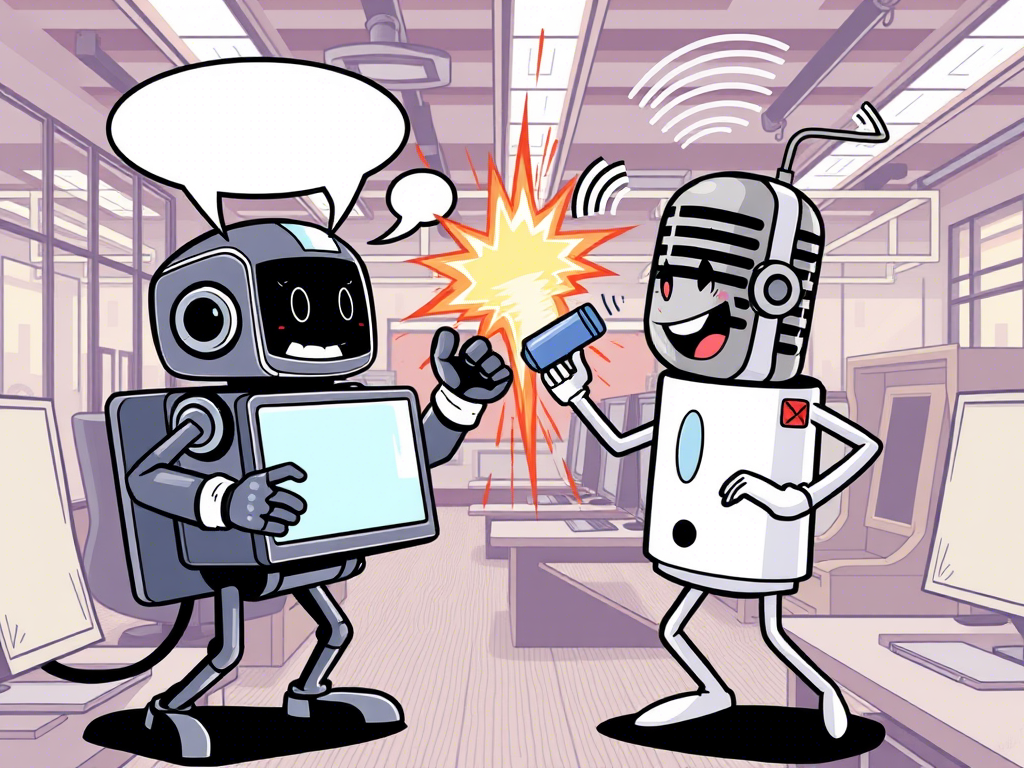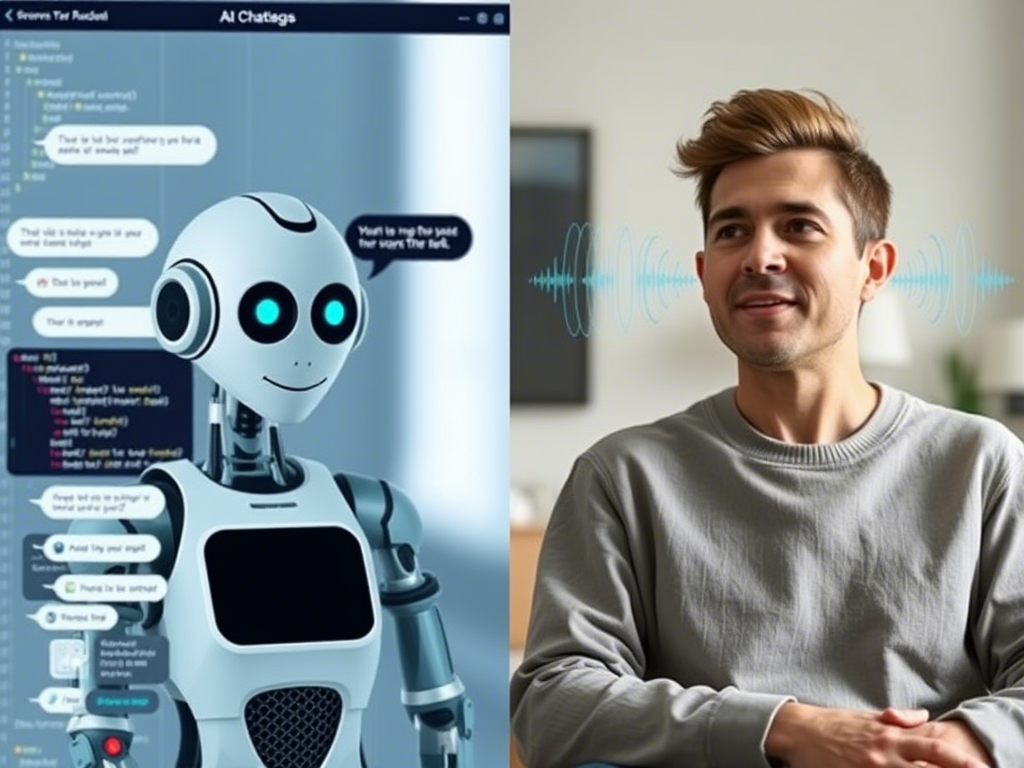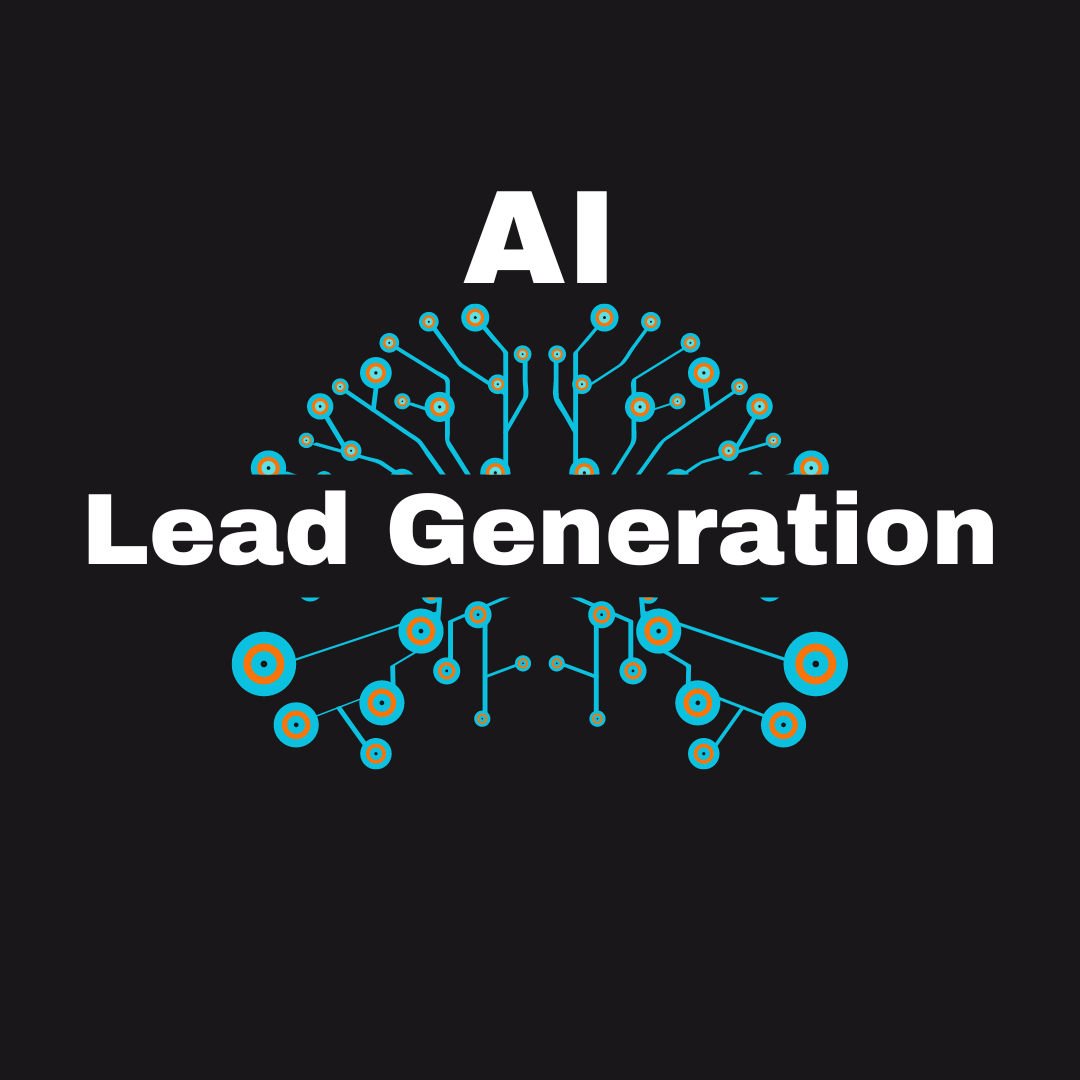AI Chatbots vs AI Voice Assistants:
Which One Converts More?
Key Takeaways
- AI chatbots increase website conversion rates by 10-100% compared to non-chatbot sites
- Chatbots excel in digital spaces like websites and apps where text-based interactions work best
- Voice assistants perform better in hands-free situations and phone-based customer service
- Actual data shows chatbots have stronger proven conversion metrics than voice assistants
- Businesses should pick their AI tool based on where their customers prefer to talk to them
- The best results often come from using both types of AI tools in the right situations
- Chatbots are more cost-effective for handling large volumes of simple customer questions
- Voice assistants create more natural conversation flow but have less conversion tracking
What Are AI Chatbots and Voice Assistants?
You’ve probably talked to both these AI tools before. But whats the difference? AI chatbots are the little text boxes that pop up when your on a website asking if you need help. Voice assistants are the ones you talk to out loud, like when you call a company and a robot voice answers.
Both tools use AI to understand what your saying and give helpful answers. But they work in different ways and places. Conversational AI powers both these tools, helping them sound more human and understand what people mean even when they ask questions in weird ways.
I’ve been building AI chatbots and voice systems for 7 years now. One thing I’ve learned – people interact totally different with each type. With chatbots, people are more direct and get to the point faster. With voice systems, they talk more naturally but also ramble more and go off topic.
Here’s a simple way to think about the differences:
| Feature | AI Chatbots | AI Voice Assistants |
|---|---|---|
| How they talk | Text messages | Spoken words |
| Where they work best | Websites, apps, social media | Phone calls, smart speakers, cars |
| Main strengths | Fast answers, works well with pictures and links | Hands-free use, more natural conversation |
| Typical uses | Answering FAQs, recommending products, qualifying leads | Customer service calls, appointment booking, reminders |
| Cost to run | Lower | Higher |
Both these AI tools can help turn visitors into customers. But which one does a better job? Let’s dig into the numbers and find out.

AI Chatbots: Conversion Power on Digital Platforms
The data on chatbot conversion is pretty amazing. Some businesses see their conversion rates jump by 67% after adding chatbots to their websites. Thats a huge increase just from one little chat box!
Why do chatbots work so well for conversions? I’ve seen three main reasons across the hundreds of businesses I’ve worked with:
- They’re always there, 24/7, ready to help even at 3AM when your human team is sleeping
- They jump in at just the right moment when someone seems stuck or confused
- They answer questions instantly without making people wait
AI chatbots really shine on websites where people are shopping or looking for information. One client of mine sells kitchen appliances online. They added a chatbot that helps people pick the right refrigerator based on their kitchen size and needs. Their conversion rate went from 2.1% to 4.7% in just two months – more than double!
Chatbots work extra well when people are almost ready to buy but have a few last questions. I call this the “hesitation zone” – that moment when someone is thinking about buying but something is holding them back. A good chatbot jumps in right then with the perfect help.
Another cool thing about chatbots is they can show pictures, videos, and buttons that help guide people. One travel company I worked with had a chatbot that showed photos of hotel rooms right in the chat when people asked about them. Their booking rate went up 34% after adding this feature.
Proactive chatbots that start conversations based on user behavior work even better than ones that wait for people to ask questions. A chatbot that pops up and asks “Need help finding the right size?” when someone has looked at the same shirt in different sizes for a while can make a huge difference.
Some industries see better results than others. Chatbots in financial services convert at 3.1x the rate of traditional forms. E-commerce chatbots typically boost sales by 25-30%. B2B lead generation chatbots qualify leads at 35-40% higher rates than static forms.
How AI Chatbots Drive Lead Generation
So we know chatbots convert well, but how exactly do they turn visitors into leads and customers? Let’s break down the process.
First, chatbots capture people who would never fill out a form. About 55% of chatbot users would never have contacted the company through traditional methods. That’s new leads you’d miss completely without a chatbot!
I worked with a software company that deployed AI chatbots on their pricing page. The results were crazy good – they got 10x more qualified leads than before. Why? Because people had specific questions about pricing plans that weren’t answered on the page. The chatbot could handle these questions instantly.
Chatbots also do a great job qualifying leads. They ask the right questions to figure out if someone is a good fit for your product. One marketing agency I helped set up a qualification chatbot that asked about budget, timeline, and project goals. It filtered out 73% of tire-kickers and time-wasters, so their sales team only talked to serious prospects.
The best thing about chatbots for lead gen? They collect info while helping, not just asking for it. This feels more natural to people than filling out a long form. One real estate client saw form completions jump from 3.8% to 22% when they switched from a traditional contact form to a conversational chatbot.
Chatbots are also really good at recommending the right thing to the right person. A health supplement company I work with uses a symptom-based chatbot that helps people find the right product for their needs. Their average order value increased by 27% after adding the chatbot.
Here’s what makes chatbots so powerful for lead generation:
- They’re available instantly when interest is highest
- They can answer unlimited questions without getting tired
- They gather lead info through natural conversation
- They qualify prospects before sending them to sales
- They can handle thousands of conversations at once
- They get smarter over time as they learn from interactions
Many of my clients have found that chatbots work best when they don’t try to hide that they’re bots. People actually prefer knowing they’re talking to AI as long as it’s helpful and can connect them to a human when needed.
AI Voice Assistants: When and Where They Excel
Voice assistants might not have the same conversion data as chatbots, but they still have important strengths. Some scenarios just work better with voice than text.
The most obvious one is phone calls. Some customers still prefer to call, especially for complex issues or emotional purchases like healthcare or financial services. AI-enhanced voice systems can handle these calls much better than old-school phone menus.
I helped a dental office implement a voice assistant for appointment scheduling. Their booking rate went up 23% because the AI could offer specific time slots and answer questions about services, all without putting people on hold. Patients loved it because it felt more personal than filling out a form online.
Voice assistants also win in hands-free situations. If someone is driving, cooking, or has their hands full, talking is easier than typing. This creates opportunities to connect with customers in moments you’d otherwise miss.
The natural flow of conversation is another strength of voice assistants. People speak more freely and share more details when talking versus typing. This can uncover needs and pain points that might not come up in a text chat.
One insurance company I advised found that callers disclosed important policy details to their voice assistant that they often left out on web forms. This led to better policy matches and a 17% higher conversion rate for voice versus digital channels.
Voice assistants are also great for certain demographics. Older users and those less comfortable with technology often prefer speaking to typing. A medical supply company saw their conversions among seniors increase by 41% after adding a voice assistant option to their ordering process.
Here are scenarios where voice assistants tend to convert better than chatbots:
- Complicated processes that would require lots of back-and-forth typing
- Emotionally sensitive topics where tone of voice matters
- Services targeting older demographics or less tech-savvy users
- Situations where users are multitasking or can’t use their hands
- Local businesses where phone calls are still a primary contact method
The main challenge with voice assistants is tracking their impact on conversions. It’s harder to follow the customer journey when it moves between voice and digital channels. One workaround I’ve used is giving unique discount codes or landing page URLs through the voice assistant to track conversions back to those interactions.
Key Differences in Conversion Effectiveness
When we compare these AI tools head-to-head, we see some clear patterns about which converts better in different situations. Understanding these differences between AI methods helps you pick the right one for your business.
The biggest factor is where your customers prefer to interact with you. If most of your business happens on your website, chatbots will almost always convert better. If you get lots of phone calls, voice assistants make more sense.
The type of purchase matters too. Chatbots generally convert better for:
- Products under $100 where decisions are made quickly
- Visual products where pictures help sell (clothing, furniture, etc.)
- Technical products where specs and comparisons matter
- Anything with lots of options or configurations
Voice assistants tend to convert better for:
- High-value services requiring consultation (legal, financial, etc.)
- Emergency services where speed is critical
- Appointments and scheduling
- Products targeted to older demographics
I’ve found the gap between chatbots and voice assistant conversion rates is biggest in e-commerce. A sporting goods retailer I worked with tested both and found their chatbot converted at 4.2%, while their voice system only hit 1.8%. The chatbot could easily show product images and size charts, which made a huge difference.
For B2B lead generation, the gap is smaller but still favors chatbots. A SaaS company in the project management space saw qualified lead rates of 12% from their chatbot versus 9% from their voice system. Both worked well, but the chatbot was more cost-effective per lead.
One interesting data point: for existing customers, voice assistants sometimes convert better for upsells and cross-sells. The personal touch of voice creates better rapport, which helps when suggesting additional purchases. A telecom provider found their voice assistant had a 22% success rate offering plan upgrades versus 18% for their chatbot.
The cost per conversion is another key difference. Chatbots typically cost less per conversion because:
- They handle more interactions simultaneously
- They require less processing power than voice recognition
- They’re easier to deploy and maintain
- They integrate more easily with existing websites and apps
This efficiency advantage grows as volume increases. For high-traffic websites, chatbots can be 3-5x more cost-effective per conversion than voice assistants.
How to Choose the Right AI Solution for Your Business
So which should you pick for your business? The answer isn’t always either/or. Many of my most successful clients use both in different situations.
Start by looking at where your customers already talk to you. Check your ROI across channels to see where conversions happen now. If most of your sales come through your website, start with a chatbot. If phone calls drive your business, a voice assistant might be better.
Consider your customer demographics too. Younger audiences (under 35) typically prefer chatbots and text-based communication. Older customers often prefer voice. B2B buyers in professional settings usually prefer chatbots during research but may want voice or human contact before making final decisions.
Your product or service type should influence your choice too:
- Physical products: Chatbots usually work better because they can show images and comparison charts
- Services: Voice assistants often perform better because they create more connection and trust
- Software: Chatbots excel by demonstrating features with screenshots and videos
- Local businesses: Voice assistants frequently convert better for appointment booking
I always recommend starting small with either technology. Pick one high-value conversion point to test first:
For chatbots, good starting points include:
- Product pages with high traffic but low conversion
- Checkout pages where people often abandon carts
- Pricing or comparison pages where decisions happen
- FAQ sections where people have pre-purchase questions
For voice assistants, consider starting with:
- Appointment scheduling
- Customer service calls for existing customers
- Lead qualification for high-value services
- Order status and tracking requests
The resource requirements differ too. Chatbots generally need less ongoing maintenance and can be deployed faster. Voice systems typically require more tuning and optimization to work well.
One smart approach I’ve seen work well is using chatbots as the primary conversion tool, then offering voice options when the conversation gets complex or emotional. This gives you the efficiency of chatbots with the personal touch of voice when it matters most.
Tracking is essential for either tool. Make sure you can measure:
- Conversation volume
- Completion rates
- Conversion rates
- Customer satisfaction
- Common questions and issues
- Handoff rates to human agents
With good tracking, you can continuously improve your AI’s performance regardless of which type you choose.
The Future of AI Conversions: Hybrid Approaches
The line between chatbots and voice assistants is getting blurrier every day. The future isn’t about choosing one or the other – it’s about seamless AI experiences that switch between text and voice based on what works best in the moment.
This hybrid approach is where AI lead generation is headed. I’m already seeing companies implement systems that let customers start a conversation by voice then continue by text, or vice versa.
One insurance client implemented what we called a “channel-flexible” AI assistant. Customers could start getting quotes on the website via chat, continue the conversation while driving via voice, and finish the purchase later by picking up the text chat where they left off. This flexibility increased their completion rate by 34%.
The technology enabling this shift includes:
- Unified conversation platforms that maintain context across channels
- Improved voice-to-text and text-to-speech capabilities
- Better natural language understanding that works for both written and spoken language
- Voice biometrics for secure authentication
The most exciting development I’m seeing is contextual switching – AI that can suggest the best channel for each part of the conversation. For example, if a customer is trying to describe a complex problem by text, the AI might say “This might be easier to explain by voice. Would you like me to call you?”
Similarly, if a voice conversation requires sharing visual information, the AI could say “I can text you a comparison chart that might help. Would that be useful?”
Several companies are already seeing success with this approach:
- A travel booking site increased conversions by 40% by allowing seamless switching between voice and text
- A mortgage lender reduced application abandonment by 27% with a hybrid approach
- A tech support service decreased resolution time by 34% by using the most efficient channel for each issue type
The key to success with hybrid approaches is maintaining context and personalization across channels. The customer should never have to repeat information regardless of how they’re communicating.
For businesses thinking about the future, I recommend building with this flexibility in mind from the start. Choose platforms and vendors that support multiple interaction types rather than locking into a single approach.
Companies that master this integrated approach will have a significant advantage in conversion rates over the next few years. The best convertors won’t be chatbots or voice assistants – they’ll be intelligent assistants that use whatever communication method works best for each customer and situation.

Frequently Asked Questions
How much do AI chatbots and voice assistants typically cost?
Simple chatbots start around $50-100 per month for basic functionality on a single site. Enterprise-level chatbots with advanced features cost $500-2,000+ monthly. Voice assistants typically cost more, starting around $200-500 monthly for basic functionality and ranging to $2,000-5,000+ for enterprise systems. Custom-built solutions for either type can cost $10,000-50,000+ in development fees plus ongoing costs.
How long does it take to implement a chatbot versus a voice assistant?
Basic chatbots can be implemented in 1-4 weeks depending on complexity. Voice assistants typically take 2-6 months due to more complex integration requirements, voice recognition training, and phone system connections. The timeline depends greatly on how much customization you need and how well-prepared your data is.
Can small businesses benefit from these AI tools or are they just for large companies?
Both small and large businesses can benefit from AI conversion tools. Many platforms offer affordable entry-level options designed specifically for small businesses. The key is starting simple – focus on automating your most common customer interactions first. Even a basic chatbot that answers FAQs and collects contact information can significantly improve conversion rates for small businesses.
Which industries see the best conversion rates from AI chatbots and voice assistants?
E-commerce, financial services, travel, real estate, and healthcare typically see the highest conversion improvements from chatbots. Voice assistants show the strongest results in appointment-based businesses, insurance, banking, healthcare, and customer service operations. B2B companies with complex sales cycles benefit from both but typically see better lead qualification from chatbots.
How do customers generally feel about interacting with AI versus humans?
Customer satisfaction depends on implementation quality and appropriate use cases. About 69% of consumers prefer chatbots for quick answers to simple questions, but 86% want the option to escalate to a human for complex issues. For voice assistants, 72% of users appreciate their convenience, but 65% get frustrated if the AI doesn’t understand them. The key is setting clear expectations and providing easy paths to human help when needed.
Do I need special technical skills to manage a chatbot or voice assistant?
Modern platforms are increasingly user-friendly, with many offering no-code interfaces for basic management. You can adjust common responses, add new questions, and view analytics without technical skills. However, for optimal performance and advanced customization, having someone with relevant technical knowledge is helpful. Many vendors offer managed services if you don’t have in-house expertise.
How can I measure the ROI of implementing AI conversion tools?
Track key metrics before and after implementation: conversion rates, average order value, cart abandonment rate, lead quality, sales cycle length, and customer service costs. Calculate time saved by automation and multiply by staff hourly costs. Most platforms provide analytics dashboards that help track these metrics. A properly implemented AI solution should show positive ROI within 3-6 months.
Can I use both chatbots and voice assistants together effectively?
Yes, many businesses get the best results using both tools for different purposes. For example, use chatbots on your website for lead generation and product information, while using voice assistants for appointment scheduling and customer service calls. The key is ensuring consistency in the information and experience across both channels and ideally allowing conversations to transfer seamlessly between them.
Can AI Replace Human Sales Reps? A Deep Dive
Can AI Replace Human Sales Reps? A Deep DiveKey Takeaways AI Strengths Human Advantages Best Approach 24/7 availability Emotional intelligence Hybrid model combining both Handles thousands of interactions Builds real relationships AI for routine tasks Cost-effective...
The Science Behind AI-Powered Lead Generation
The Science Behind AI-Powered Lead GenerationKey Takeaways Pattern Recognition - AI analyzes massive datasets to find hidden customer patterns, identifying high-value prospects faster than any human could Predictive Analytics - Machine learning forecasts which leads...
The Best AI Tools for Automating LinkedIn Outreach
The Best AI Tools for Automating LinkedIn Outreach Key Takeaways Expandi offers the most advanced personalization for LinkedIn messages with excellent safety features LaGrowthMachine excels at multi-channel campaigns that combine LinkedIn, email, and Twitter...



